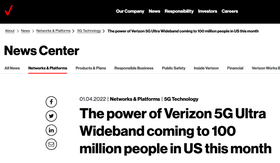Why AdRoll is Your Ideal Programmatic DSP
AdRoll helps you run full-funnel, multi-channel ad campaigns. Learn how our programmatic DSP enables better ad campaigns that convert customers.
Read More
If you spent most of last year glued to your phone — whether watching endless clips on TikTok, doomscrolling, or playing Among Us — you weren’t alone. Researchers estimate that U.S. adults spent a whopping 3 hours and 54 minutes per day on their mobile devices last year. (Don’t believe us? Go check your phone’s “Screen Time” page.)
While our upward-trending mobile device usage has parents and optometrists concerned, it’s great news for retailers. Not only are shoppers spending more time browsing product catalogs and adding items to their carts, but they’re also engaging with brands on social media, reading reviews, and clicking on ads. Mobile web traffic now accounts for over 55% of all global web traffic — up from 31% in 2015.
That said, here are six mobile marketing trends to watch out for this year, complete with ideas on how to get ahead of the game before it’s too late.
5G — the newest generation of broadband cellular networks — is in the midst of worldwide adoption. Apple has announced all 2022 iPhones will have 5G, and Verizon and AT&T are rolling out C-Band 5G upgrades.

Freezing on Zoom will soon be a thing of the past.
For non-tech aficionados, 5G offers more reliable high-speed internet access, transforming the way you download, stream, and browse. This has enormous implications for mobile marketing — with 5G technology, brands can offer richer and more immersive data-heavy experiences, including interactive 4K videos, augmented reality (AR), and virtual reality (VR), once inaccessible due to bandwidth and speed limitations.
There’s more to this mobile marketing trend, too: 5G will connect more people globally to the web — that’s a treasure trove of new data that can help marketers nail down their targeting.
Brush up on your knowledge of 5G technology and its latest rules and regulations. By staying at the top of the newest ad tech innovations, you'll be first in line to take advantage of these opportunities.
Start brainstorming ideas for immersive experiences — check out this guide on AR and VR for ecommerce brands.
How many times do you say, “Hey Alexa,” “Hey Google,” or “Hey Siri” every day? With over 55% of U.S. households owning a smart speaker, your answer is probably “more than I’d like to admit.”
It’s time for brands to optimize for voice search and offer more conversational experiences. Voice search is everywhere — from your living room to your car — and it’s becoming a key driver of online shopping and discovery.
But getting started with this mobile marketing trend is no walk in the park. Shoppers don’t use the same search terms when speaking and typing — so marketers must research and create long-tail keywords that more accurately reflect conversational speaking styles compared to abbreviated typing styles.
Make sure your SEO strategy incorporates both speaking and typing keywords.
Check out this guide on setting up voice search for your ecommerce store.
If you’ve recently sought help for a purchase through a company’s live chat feature, you probably spoke to a chatbot without even realizing it. Thanks to robust pre-programmed scripts and new AI technologies, conversational chatbots sound more like humans than ever before.
If you haven’t implemented a chatbot on your site, make it a priority this year. Not only will you save on customer support costs, but you’ll also answer shoppers’ frequently-asked questions and common concerns more quickly.
If you already have a chatbot in place, consider what features your current chatbot lacks or how it can improve.
If you’re just getting started with a chatbot, start brainstorming common questions and answers that would best alleviate most shoppers’ initial frustrations.
Look into repurposing your website's chatbot for other channels, such as Facebook Messenger.
The most downloaded app in 2020 and 2021? TikTok. But don’t write off the app as just another channel for Gen Zers to express their strange humor — not only has the platform started national conversations and new trends, but it’s also proven to be a valuable sales tool for brands.
If you’re still clinging to tried-and-true marketing channels such as Facebook and Google, you’re missing out on this mobile marketing trend. Trust us: TikTok isn’t going anywhere anytime soon.
Add TikTok to your 2022 social media plans and read this guide on getting started.
Keep your TikTok videos short and relevant to your target customers.
Invest more heavily in creating high-quality paid and organic video content — not just for TikTok, but also for YouTube and Instagram. Plus, think outside of the box with your content creation in terms of editing and CTAs.
Industry experts forecast that targeted mobile advertising spend will surpass $32 billion by 2024. Yup, get ready for a wave of location-targeted ads, coming to a mobile device near you!

How geofencing works.
All jokes aside, location-targeted ads are an incredibly useful way to deliver relevant messages and offers to shoppers. Here are three types of location-based ads that you may have experienced just from strolling through a mall:
Geofencing, where a retailer designates a radius around a specific location so shoppers within the radius receive targeted ads.
Geotargeting, where a retailer creates audience segments based on shoppers who have previously visited a specific location.
Geoconquesting — similar to geotargeting, except you’re targeting shoppers who have visited a competitor’s business rather than your own.
Consider planning a campaign that caters to shoppers near your brick-and-mortar store. What deals, coupons, or offers would most entice them?
Research your competitors’ location-based strategies and determine how you can better compete.
All signs point to omnichannel marketing as the status quo in 2022. By reflecting the topsy-turvy ways shoppers currently discover, browse, and purchase, it’s the ultimate marketing model for maximizing reach and engagement.
For those who need a refresh, omnichannel marketing involves combining all your marketing touchpoints — social media, chat, SMS, digital ads, content, email, events, and even your brick-and-mortar store — into a seamless, cohesive shopping journey. With mobile marketing becoming more essential than ever, make sure your mobile touchpoints play a prominent role in your omnichannel marketing strategy.
Develop an SMS marketing strategy — text message open rates still hover at an impressive 98%.
Invest in building a branded app that combines shopping with personalized content, push notifications on limited-time events, and a customer loyalty and rewards program.
Check out AdRoll’s omnichannel marketing solutions, which not only unify all your marketing efforts, but also your analytics in one handy dashboard.
Optimizing your brand for mobile can no longer be an afterthought. As the pandemic rages on, we’ll likely see shoppers continue to avoid shopping malls and instead toward mobile shopping channels instead.
Get started with these mobile marketing trends and tips, and don’t forget to check out the AdRoll Marketing Resource Library for more 2022 predictions.
Last updated on September 10th, 2025.